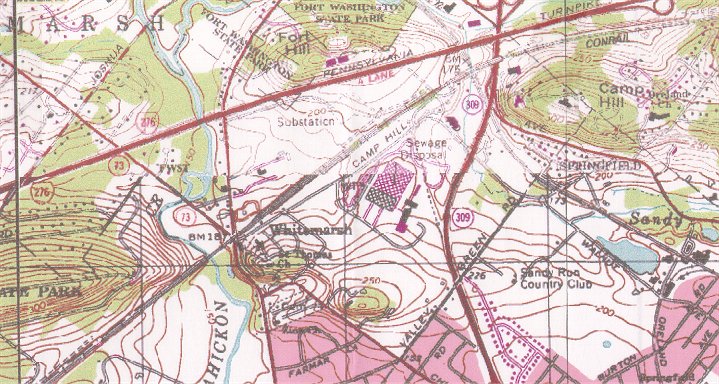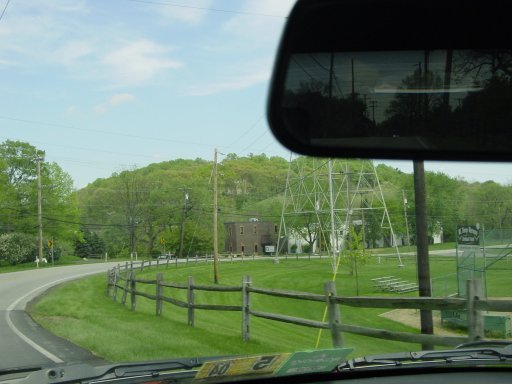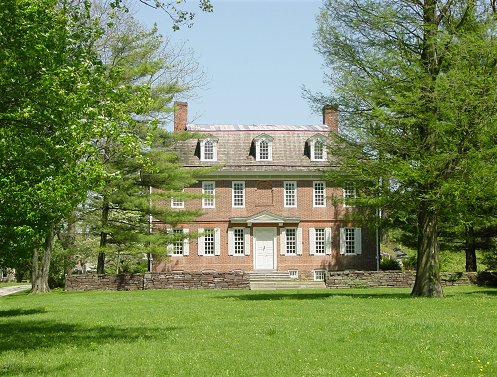
Whitemarsh
December 4-8, 1777
Following the British takeover of Philadelphia, Howe detached many of his troops to other duties, most importantly clearing up his Delaware River line of supply. With American troops fortified along the river, the overland British supply line into Philadelphia would always be vulnerable. Washington took advantage of Howe's scattered condition with a daring early morning attack at Germantown on October 4th. There was real potential for a decisive American victory, but for a variety of reasons the attack failed, and Washington withdrew north. But on November 2nd, Washington edged closer to Philadelphia, taking up a position at Whitemarsh and entrenching.
Washington was waiting in vain for Gates' Northern Army to join him in the hope that the combined force might repeat a Saratoga-type victory in Pennsylvania. Meanwhile, Howe succeeded in securing his supply lines. There had been plenty of difficulties, but the task was completed in late November. Although it was now past time to be in winter quarters, when Howe received intelligence that Washington planned to mover further away from Philadelphia, he resolved to make one final attempt to bring Washington's 12 to 15,000 man army to decisive battle - while they were most vulnerable, on the march. Spies, however, alerted Washington to Howe's intentions.

Topo Map
The American position extended to the east and west off the area on this map, but this was the heart of the American position. On left of the map, where it says "...ATE PARK", is Militia Hill. Fort Hill is in the center, and Camp Hill is on the right. These positions were strong deterrents to a British attack. Seeing this from St. Thomas Church, Howe resolved to flank the position to the east, which led to fighting near Edge Hill, three miles to the southeast.

Camp Hill
Seen from Camp Hill Road while heading east, this is the western end of Camp Hill. The American line on the hill faced toward the right. Washington's headquarters, Emlen House, is in front of the hill, and is now marked with a historical sign. In front of Camp Hill, Sandy Run provided a slight obstacle to potential attackers as it turned north and ran into the Wissahickon, which flows behind Fort Hill then south to the Germantown battlefield.

Fort Hill
This earthen fortification on Fort Hill, now called Fort Washington, is preserved in the Fort Washington State Park. It was in the center of Washington's position on an isolated hill. Part of a series of ridges north of Philadelphia, the terrain here was rough by 18th century military standards, and it heavily favored the defense.

Hope Lodge
Built between 1743 and 1748, Hope Lodge in front of Fort Hill was used as a headquarters by John Cochran, George Washington's Surgeon General. It is now open as a historical site.